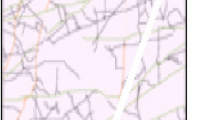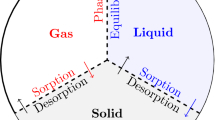Abstract
The underground transport of environmental xenon (UTEX) model is a finite-difference code that was developed at the University of Texas at Austin to simulate the transport of radioxenon from an underground nuclear detonation to the surface. UTEX handles a time dependent source term and includes the effects of radioactive decay to determine isotopic signatures of the various radioxenon species as a function of release time. The model shows that significant perturbations in the isotopic signatures are possible under some geologic conditions. Transport of radioxenon gas in UTEX is driven in large part by atmospheric pumping. A study was undertaken to characterize the dependence of resulting isotopic signatures on the various geologic and physical parameters that define the system model. Additionally, the model was used to roughly simulate isotopic measurements at various depths and position; the potential dependence of isotopic radioxenon fractionation on sampling depth and lateral position between fractures was examined.







Similar content being viewed by others
References
Carrigan CR, Heinle RA, Hudson GB, Nitao JJ, Zucca JJ (1996) Tracer gas emissions on geological faults as indicators of underground nuclear testing. Nature 382:528
Hannon WJ (1985) Seismic verification of a comprehensive test ban. Science 227:251
Zuckerman L (1996) Prospects for a comprehensive test ban. Nature 361:392
Carman AJ, McIntyre JI, Bowyer TW, Hayes JC, Heimbigner TR, Panisko ME (2002) Discrimination between anthropogenic sources of atmospheric radioxenon. Trans Am Nucl Soc 87:89
Saey PRJ (2009) The influence of radiopharmaceutical isotope production on the global radioxenon background. J Environ Radioact 100:396–406
Van der Stricht S, Janssens A (2001) Radioactive effluents from nuclear power stations and nuclear fuel reprocessing sites in the European Union, Radiation Protection, European Commission
Biegalski SR, Saller T, Helfand J, Foltz Biegalski KM (2010) Sensitivity study on modeling radioxenon signals from radiopharmaceutical production facilities. J Radioanal Nucl Chem 284:663–668
Carrigan CR, Heinle RA, Hudson GB, Nitao JJ, Zucca JJ (1997) Barometric gas transport along faults and its application to nuclear test-ban monitoring. Report No. UCRL-JC-127585
Nilson RH, Lie KH (1990) Double-porosity modeling of oscillatory gas motion and contaminant transport in a fractured porous medium. Int J Numer Anal Methods Geomech 14:565
Chen ZX (1989) Transient flow of slightly compressible fluids through double-porosity, double-permeability systems. Transp Porous Med 4:147
Lowrey JD (2010) Master’s Thesis. University of Texas at Austin, December
McCord J (2007) Phase I contaminant transport parameters for the groundwater flow and contaminant transport model of Corrective Action Unit 97: Yucca Flat/Climax Mine, Nevada Test Site, Nye County, Nevada, Revision 0. Report No. S-N/99205–096
Acknowledgments
This material is based upon work supported by the Department of Energy, National Nuclear Security Administration under Award Number DE-AC52-09NA28608.
Disclaimer
This report was prepared as an account of work sponsored by an agency of the United States Government. Neither the United States Government nor any agency thereof, nor any of their employees, makes any warranty, expressed or implied, or assumes any legal liability or responsibility for the accuracy, completeness, or usefulness of any information, apparatus, product, or process disclosed, or represents that its use would infringe privately owned rights. Reference herein to any specific commercial product, process, or service by name, trademark, manufacturer, or otherwise does not necessarily constitute or imply its endorsement, recommendation or favoring by the United States Government or any agency thereof. The views and opinions of authors expressed herein do not necessarily state or reflect those of the United States Government or any agency thereof.
Author information
Authors and Affiliations
Corresponding author
Rights and permissions
About this article
Cite this article
Lowrey, J.D., Biegalski, S.R. & Deinert, M.R. UTEX modeling of radioxenon isotopic fractionation resulting from subsurface transport. J Radioanal Nucl Chem 296, 129–134 (2013). https://doi.org/10.1007/s10967-012-2026-1
Received:
Published:
Issue Date:
DOI: https://doi.org/10.1007/s10967-012-2026-1




